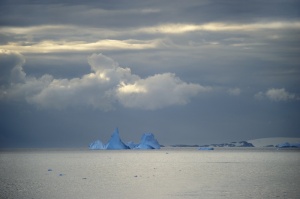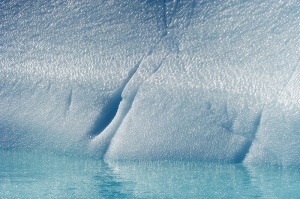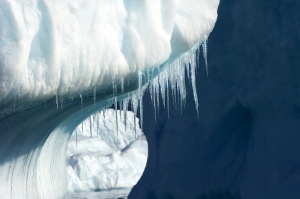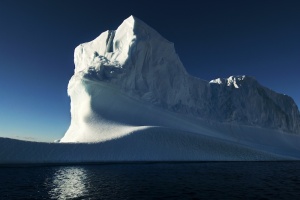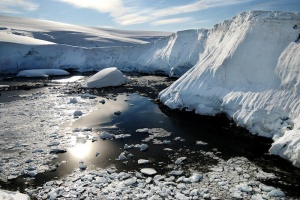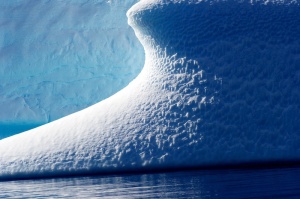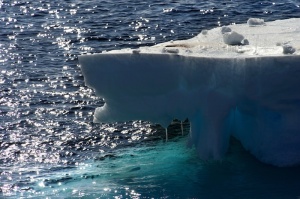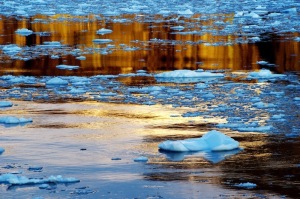The noise of ice: Antarctica
by Enzo Barracco MEN WANTED
for hazardous journey, small wages, bitter cold, long months of complete darkness, constant danger, safe return doubtful, honour and recognition in case of success.
Ernest Shackleton expedition advertisement, 1900
One day, in a bookshop in London, I stumbled across a book about Shackleton. I was struck by his character, and his spirit of endeavour leapt out at me from the pages. After reading just a few words, the idea sank in. I knew what I wanted to do, and the thought was daunting and exhilarating in equal measure. Shackleton’s courage and endeavour inspired me to discover the true end of the world – the wildest and most fragile part of our planet. I wanted to go to the furthest reaches of Earth to discover the limit of man. Everyone has their own Antarctica, but few know what it is. In many ways we are all explorers – each day we encounter new parts of the world, new people and new challenges.
Click on any image to enlarge
and view in slideshow
We wonder: what is Antarctica? – that huge, icy, impenetrable expanse about which we know almost nothing. It is always there, motionless, silent. It is an extreme, violent and unexplored land, a land where there are no people and no society, where mystery reigns supreme, a land that will always captivate researchers and explorers.
The challenge was what appealed to me: the uncertainty, the danger and the mystery of the unknown. But allied to that was the artistic task of decoding the message of a complex part of the world, and returning from the trip with work that would do justice to Antarctica.
The aim of my project was to try to create a real dialogue between man and nature, in which nature – Antarctica – shows its majesty and fragility at the same time. This dialogue is created through observation, the understanding of the balance of our fragile world and how essential this unique place is.
The fate of human beings cannot be separated from that of our host planet. I felt that writing a visual story might inspire people to an attitude of respect for and attention to nature in order not to hurt her. This was a very instinctive way of working, an intimate one, driven by the desire to establish a deep relationship with the environment. This work would be a synergy between man, sea, wind, ice and the signs of time. For millennia these elements have remodelled this unique place, forcing a continuous transformation. My work would be intended to block only for a split second this continuous transformation, merely observing what nature would reveal to me.
Adapted from The Noise of Ice: Antarctica by Enzo Barracco with a foreword by Sir Ranulph Fiennes
Enzo Barracco is an Italian photographer who has worked with international clients including Vivienne Westwood, Moncler, Park Hyatt Group, La Prairie Group, Barclays and Estée Lauder. Photographs from his Antarctic journey were exhibited at the Royal Geographical Society in 2013. The Noise of Ice: Antarctica is published by Merrell, £30.
Read more.
enzobarracco.it
Extended captions:
‘River’ (image 2)
This spectacular and unusual surface pattern is caused by wind and waves during storms. Watching carefully, I spotted an inner river within the ice, with water flowing through it directly into the ocean.
‘The Empire of Ice’ (image 4)
When I spotted this huge iceberg I decided to try to get closer to it. As I approached, its huge size and majesty became apparent. It immediately reminded me of René Magritte’s set of paintings ‘The Empire of Lights’. Just as in the paintings, the ice was divided into two distinct parts: one part day; the other plunged into night.
‘Crater’ (image 5)
We spent hours climbing an ice mountain, and at times I thought we were never going to reach the top. When we finally got there, a gate to another world seemed to open, as we looked down into a wide crater. Inside it was dark, mysterious water and blocks of ice of all sizes. The scene felt prehistoric, wild and impenetrable. We wanted to descend further into the crater, but the ice was very unstable. Yet again, we were at the mercy of nature, so we made the decision to leave the crater very carefully and return to sea level.
‘Sunset’ (left)
After many long, intense days I finally saw my first sunset in Antarctica, and it was certainly worth the wait. We were surrounded by mile after mile of sea dotted with floating white ice. When the sun set, it turned the sky a burnt orange, which was reflected in the water. Meanwhile that same, late light instantly turned the ice a vivid cobalt blue. It was an unreal, magical scene.
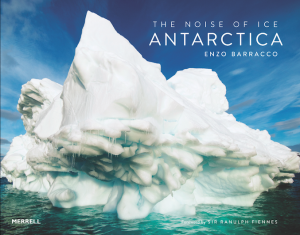 Read more aand buy the book” width=”300″ height=”235″>
Read more aand buy the book” width=”300″ height=”235″>

